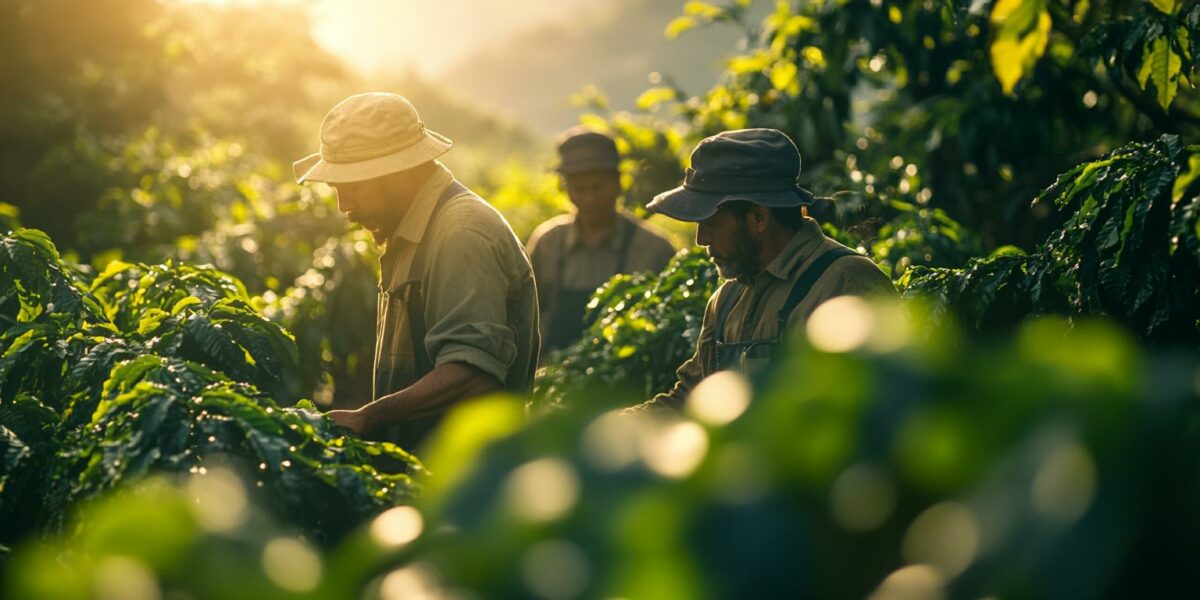The Future of Coffee Amid Climate Change
In the lush highlands of southern Mexico, coffee farmers are grappling with the harsh realities of climate change. Despite using drought-resistant shade-grown methods, prolonged dry seasons are taking a toll on their crops. As Tomas Edelmann, a fourth-generation farmer, notes, “Without the right weather, production suffers, and costs soar.”
This rise in production costs inevitably leads to higher coffee prices. Coffee aficionados might need to brace themselves for a significant price surge. Experts predict that due to climate change, the global coffee supply will remain constrained for the foreseeable future.
The International Coffee Organization (ICO) recently reported a 13-year high in coffee prices, with the ICO Composite Indicator Price averaging a staggering 226.83 cents per pound. This marks a critical moment for the coffee industry, which is already facing numerous challenges.
Ryan Delany, founder of Coffee Trading Academy, explains, “Coffee’s pricing is influenced by multiple supply and demand dynamics. Currently, the world is just not producing enough coffee to meet demand.”
Climate Change’s Impact on Coffee Prices
Michael Hoffmann, a professor emeritus at Cornell University, emphasizes that coffee is particularly sensitive to temperature changes. Recent climate disruptions have significantly impacted coffee production, leading to higher costs for consumers.
Brazil, the world’s leading producer of Arabica coffee, experienced a severe frost in 2021, causing a substantial supply shock. Arabica prices soared to 260 cents per pound, well above the typical range of 100 to 140 cents. This event highlights the vulnerability of coffee crops to extreme weather.
As the demand for Arabica remained high, consumers turned to Robusta, a more resilient but less desirable bean. This shift drove up Robusta prices, demonstrating how interconnected coffee markets are.
The US Department of Agriculture reported in May that Vietnam, the top Robusta producer, faced years of adverse weather, reducing export levels by 7%. The report warned that such conditions are likely to become more frequent due to climate change.
Challenges for Coffee Retailers
Coffee retailers are feeling the pressure from rising costs. The Italian company Lavazza attributed its recent price hikes to a combination of factors:
- Poor harvests
- Climate change
- Geopolitical conflicts
These elements have created a perfect storm, driving prices up and impacting coffee availability.
Nescafe owner Nestle also reported a drop in profit margins due to increased Robusta costs. The company acknowledged the challenging pricing environment as budget-conscious consumers react to previous price hikes.
Interestingly, Starbucks has managed to shield its customers from immediate price increases. The company uses fixed-price contracts and hedging strategies to lock in prices, mitigating the effects of market volatility.
Despite these measures, experts warn that if costs continue to rise, even Starbucks might have to adjust its prices. “Roasters strive to keep retail prices stable, but significant cost increases make it challenging,” notes Neil Rosser, a commodity consultant.
The Unyielding Demand for Coffee
Even with rising costs, the demand for coffee shows no signs of waning. Ryan Delany asserts, “There are no alternatives to coffee. People will continue to drink their morning cup regardless of price fluctuations.”
As consumers, we must recognize the intricate dynamics affecting coffee prices. Climate change, geopolitical events, and economic factors all play a role in shaping the future of this beloved beverage.
Understanding these complexities can help us appreciate the efforts of farmers and the challenges they face. Supporting sustainable practices and being aware of climate change impacts is crucial for the future of coffee production.
While we might pay more for our coffee, it’s a small price for preserving the livelihoods of those who bring this daily comfort to our lives. Let’s remain mindful of the broader picture and advocate for sustainable coffee practices.



abigail
Would switching to Robusta coffee help mitigate some of these issues?
wyatt
So Starbucks might raise prices soon? Nooooo! 😭
valeriaraven0
Great, another price hike. My student budget can’t handle this!
EvelynCascade
Are there any coffee brands that are particularly good at supporting sustainable farming?
AdrianUmbra
Interesting read, but what about tea? Is it facing similar issues?
harrisondreamweaver
This is a disaster! I can’t survive without my daily coffee fix.
addison
Thanks for this insightful article. It really puts things in perspective. 🙏
Max4
Ugh, another reason to hate climate change. Is there any hope?
evelyn
Does this mean we should start stocking up on coffee now? 🤔
anthony
Wow, I didn’t realize climate change would affect my morning coffee! What can we do to help farmers? ☕